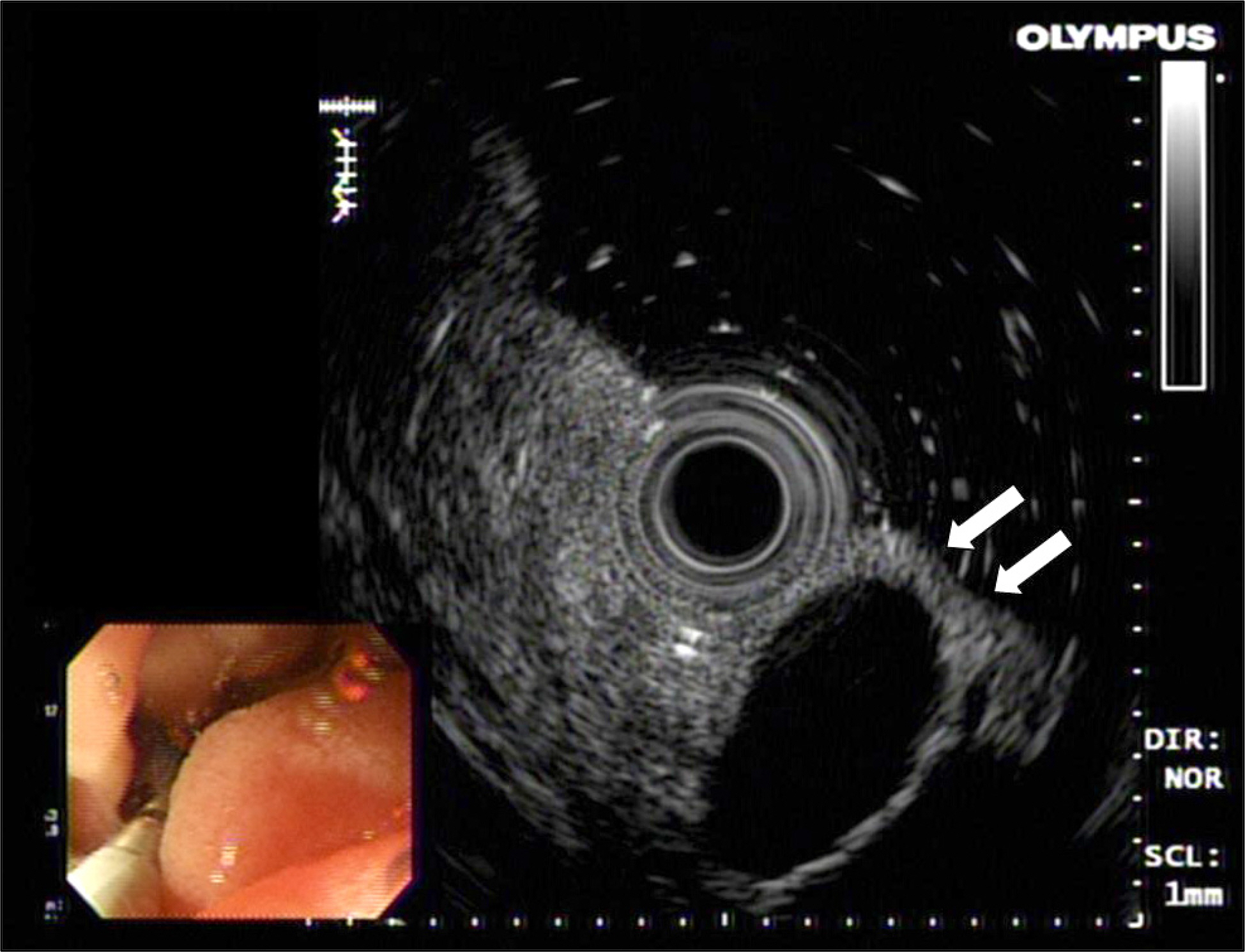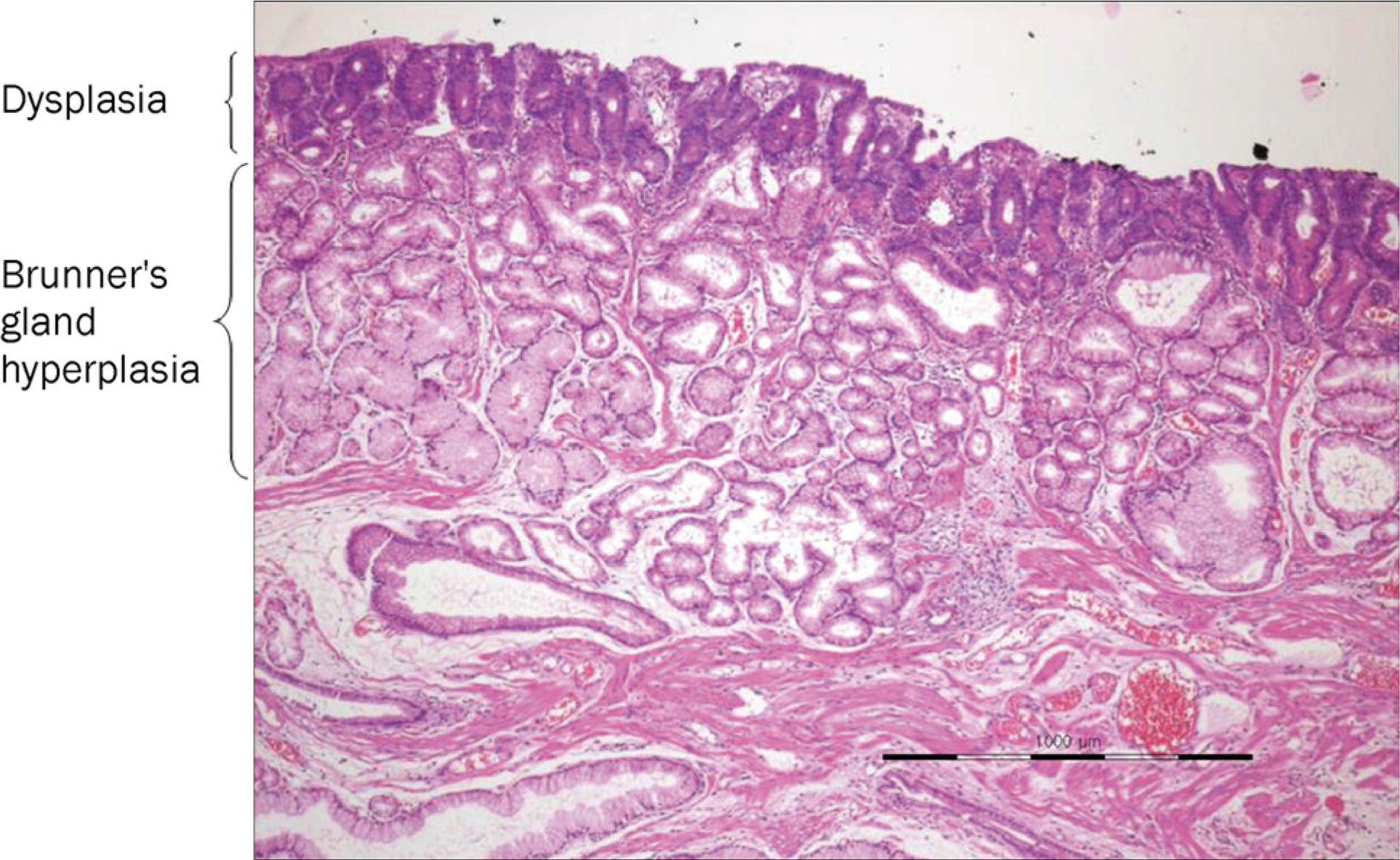Korean J Gastroenterol.
2017 Sep;70(3):141-144. 10.4166/kjg.2017.70.3.141.
Sporadic Non-ampullary Duodenal Adenoma Overriding the Cystic Dilatation of Brunner's Gland Hyperplasia
- Affiliations
-
- 1Division of Gastroenterology, Department of Internal Medicine, Incheon St. Mary's Hospital, College of Medicine, The Catholic University of Korea, Incheon, Korea. gastro@catholic.ac.kr
- KMID: 2390792
- DOI: http://doi.org/10.4166/kjg.2017.70.3.141
Abstract
- Sporadic non-ampullary duodenal adenoma is uncommon and found incidentally during endoscopic examinations. Brunner's gland hyperplasia is commonly encountered during endoscopic examinations. Adenomas arising from Brunner's gland hyperplasia originate from the glandular cells, and the surface epithelia are usually intact. Little has been reported on adenomas originating from the surface epithelium that overrides Brunner's gland hyperplasia. Here, we report a case of a sporadic non-ampullary duodenal adenoma overriding the cystic dilatation of Brunner's gland hyperplasia.
MeSH Terms
Figure
Reference
-
References
1. Jung SH, Chung WC, Kim EJ, et al. Evaluation of non-ampullary duodenal polyps: comparison of non-neoplastic and neoplastic lesions. World J Gastroenterol. 2010; 16:5474–5480.
Article2. Kim K, Jang SJ, Song HJ, Yu E. Clinicopathologic characteristics and mucin expression in brunner's gland proliferating lesions. Dig Dis Sci. 2013; 58:194–201.
Article3. Okada K, Fujisaki J, Kasuga A, et al. Sporadic nonampullary duodenal adenoma in the natural history of duodenal cancer: a study of follow-up surveillance. Am J Gastroenterol. 2011; 106:357–364.
Article4. Alexander S, Bourke MJ, Williams SJ, Bailey A, Co J. EMR of large, sessile, sporadic nonampullary duodenal adenomas: technical aspects and long-term outcome (with videos). Gastrointest Endosc. 2009; 69:66–73.
Article5. Honda T, Yamamoto H, Osawa H, et al. Endoscopic submucosal dissection for superficial duodenal neoplasms. Dig Endosc. 2009; 21:270–274.
Article6. Lépilliez V, Chemaly M, Ponchon T, Napoleon B, Saurin JC. Endoscopic resection of sporadic duodenal adenomas: an efficient technique with a substantial risk of delayed bleeding. Endoscopy. 2008; 40:806–810.
Article7. Peetz ME, Moseley HS. Brunner's glands hyperplasia. Am Surg. 1989; 55:474–477.8. Lu L, Li R, Zhang G, Zhao Z, Fu W, Li W. Brunner's gland adenoma of duodenum: report of two cases. Int J Clin Exp Pathol. 2015; 8:7565–7569. eCollection 2015.
- Full Text Links
- Actions
-
Cited
- CITED
-
- Close
- Share
- Similar articles
-
- A Case of Cystic Brunner's Gland Hyperplasia with Intracystic Inverted Growth
- A Case of Brunner's Gland Hyperplasia with Dysplasia
- A Case of Endoscopic Polypectomy with a Detachable Snare in a Huge Duodenal Brunner's Gland Adenoma
- A Case of Brunner's Gland Adenoma Presenting as Large Polyp with Stalk
- A Case of Brunner's Gland Hyperplasia of the Duodenal Second Portion with Annular Stricture Causing an Induced Obstruction





